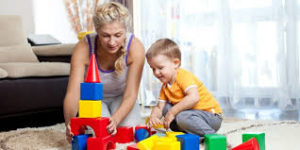Autism is a turmoil of mental health which fundamentally affects social practices and correspondence improvement. Specialists working with youngsters who are on the autism spectrum of using behavior therapy as a method for treatment.

Autism is a broad term it describes a group of neurodevelopmental disorders. These disorders address problems with social interaction, communication with others. People suffering from autism often demonstrate restricted, repetitive, and stereotyped interests or patterns of behavior.
If you need more information or you have a question regarding Autism, you can discuss it with our HearingSol healthcare professionals, just give us a call on +91-9327901950. We are always here to help you.
According to the experts of the Center for Disease Control and Prevention, It occurs more in boys than girls, The male to female ratio is 4 to 1.
The correct behavior therapy for every person with extreme autism may be involving the following technique.
Types of behavior therapy in autism
Applied Behavior Analysis
One kind of behavior therapy for autism is Applied Behavior Analysis (ABA). ABA uses to help kids to succeed at achieving positive objectives and in addition recognize negative practices. Ideally, a prepared specialist would work one-on-one for at least 40 hours for each week with kids when using ABA.
Relationship Development Intervention
Another choice for behavior therapy is relationship improvement intervention (RDI). Generally speaking, new behavior therapy focuses on social practices of the autism kids. The guardians are more required than an advisor when using RDI. After starting assessments are made by an expert, objectives are set for the kid. The guardians go to a serious workshop as well as watch a five-hour video to enable them to figure out how to do the treatment.
Sensory Integration Therapy
A third behavioral therapy is sensory integration therapy. This kind of treatment used to enhance a kid sensitivities to sensory boosts that might be overpowering to the kid. A high-frequency sound, color full lights, and touches may all be addressed. A specialist utilizing this kind of therapy will introduce the kid.
Communication Interventions Therapy
A fourth behavior therapy that is very important for people with autism is communication interventions therapy. There are various distinctive models used as well as all focus on a center shortfall with autism: the absence of successful communication. Without powerful communication, you will regularly observe undesired practices out of dissatisfaction and false impressions about the circumstances.
Enabling this to occur in social circumstances makes it more significant to the youngster. Social learning can occur through displaying, peer coaching, recreations, and numerous others.
VERBAL BEHAVIOR THERAPY (VBT)
This sort of connected conduct treatment instructs non-vocal youngsters how to convey intentionally. Kids figure out how we use words practically to get an ideal reaction.VBT tries to move kids past naming, an initial step of learning language, and motioning to vocalizing their solicitations – “I need a toy.”
In another event, the advisor will boosts, for example, food, exercises, or toys, based upon child priorities. The specialist utilizes things that will draw to child attention, for example, a cookie in the kitchen or a swing on the play area. Child`s are encouraged through repetition to comprehend that correspondence produces positive outcomes. They get what they need but they use language to request it.
